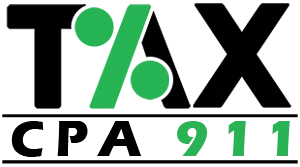Struggling with back taxes can feel overwhelming. But, the IRS Fresh Start Program may give you the relief you need.
Introduced to help taxpayers pay off their debt more manageably, this initiative makes it easier to qualify for payment plans and settlements.
But who is eligible, and what does it take to qualify?
What Is the IRS Fresh Start Program?
The IRS Fresh Start Program is not a single program but a set of expanded tax relief options designed to help taxpayers resolve their debt. It includes:
- Installment Agreements – allowing you to pay your balance over time.
- Offer in Compromise (OIC) – settling your debt for less than the full amount owed if you qualify. Learn more in our step-by-step guide to Calculating Your Reasonable Collection Potential
- Penalty Relief – reducing or removing IRS penalties if you meet requirements. See our detailed post on IRS Penalty Abatement for the request process.
Who Qualifies for the Fresh Start Program?
Eligibility depends on your individual circumstances. Common requirements include:
- Tax Debt Balance: Generally under $50,000 to qualify for streamlined installment agreements.
- Filing Compliance: All required tax returns must be filed.
- Ability to Pay: You must show either financial hardship (for OIC) or the ability to pay in installments.
- Clean History: Some relief options require a history of compliance, such as no recent penalties.
For many taxpayers, the Fresh Start Program can provide a pathway to regain financial stability while avoiding aggressive IRS collection actions.
If you’re already facing liens, levies, or wage garnishment, see our guide on When to Seek IRS Help for immediate next steps.
Examples of Eligibility
- Installment Agreement: If you owe $25,000 and can make consistent monthly payments, you may qualify for a streamlined installment plan.
- Offer in Compromise: If you owe $40,000 but your financial situation shows you can only reasonably pay $10,000, an OIC may be possible.
- Penalty Abatement: If you missed filing due to illness but have a strong compliance history, the IRS may waive penalties
When to Seek Professional Guidance
While some taxpayers manage the Fresh Start application themselves, a professional can:
- Identify which program best fits your situation.
- Prepare a strong OIC or abatement request.
- Represent you if the IRS requests more information.
Explore how Tax Relief Services can provide a more comprehensive solution if your tax challenges go beyond Fresh Start eligibility.
Meeting the IRS Fresh Start Program’s eligibility requirements can help you manage or even settle your tax debt, but penalties can still add unnecessary weight to your balance.
Before applying, it’s worth exploring whether you qualify for IRS Penalty Abatement, which may reduce or remove charges and make Fresh Start relief even more effective.
Qualifying for the IRS Fresh Start Program can give taxpayers a path to manage or even settle their debt, but eligibility is only part of the equation.
Once you know the programs available to you, the next step is recognizing when it’s time to take action.


